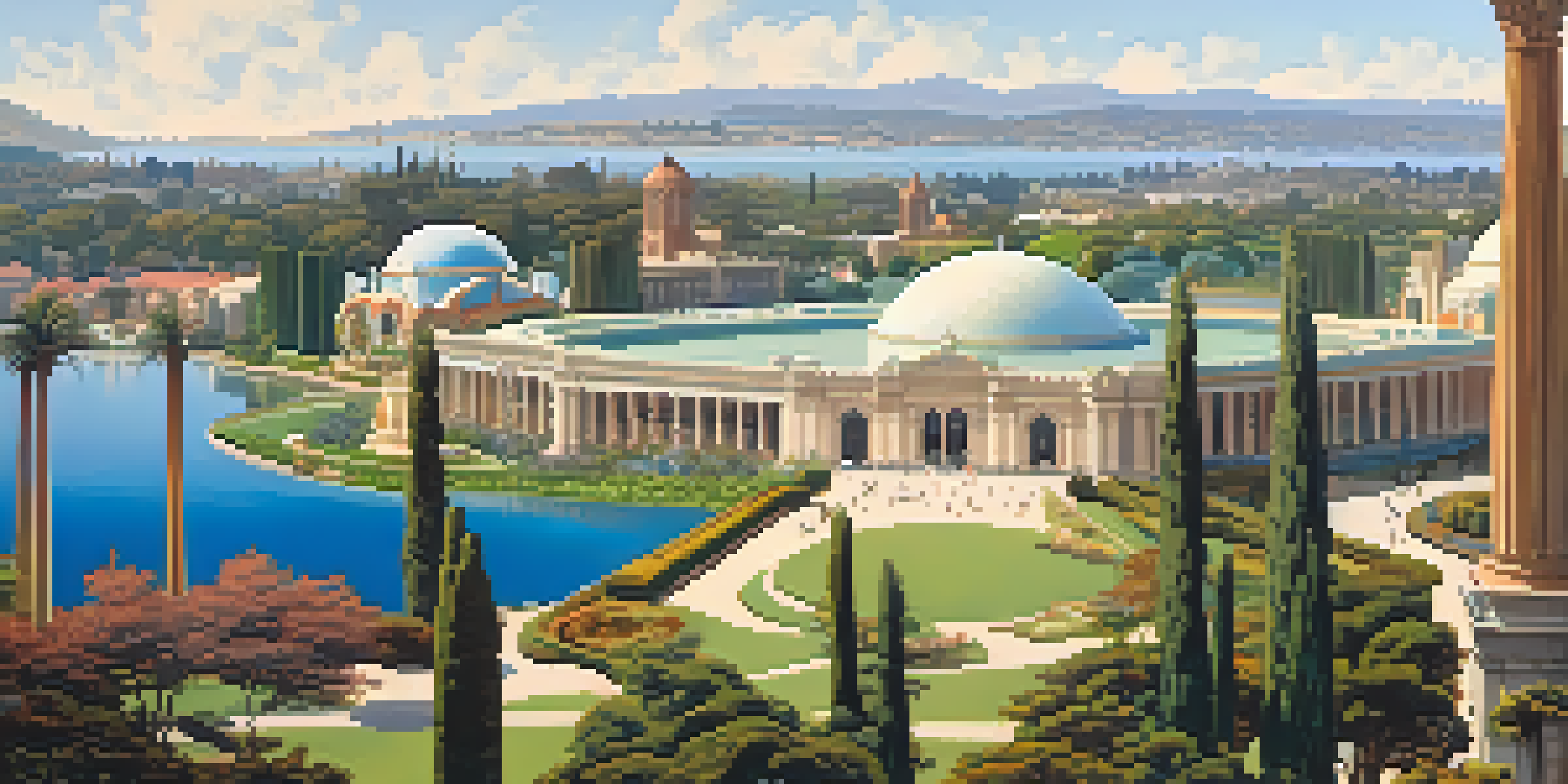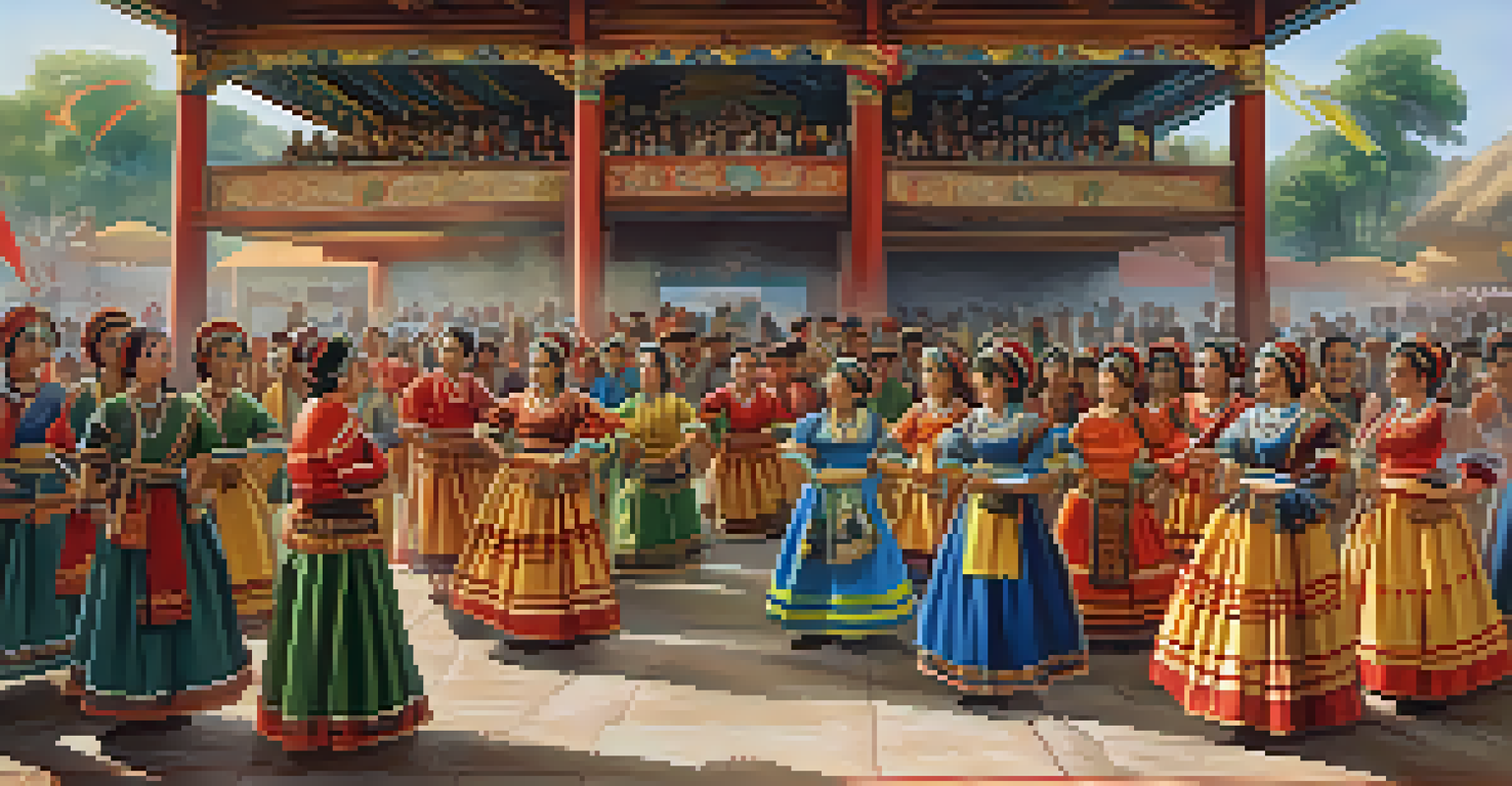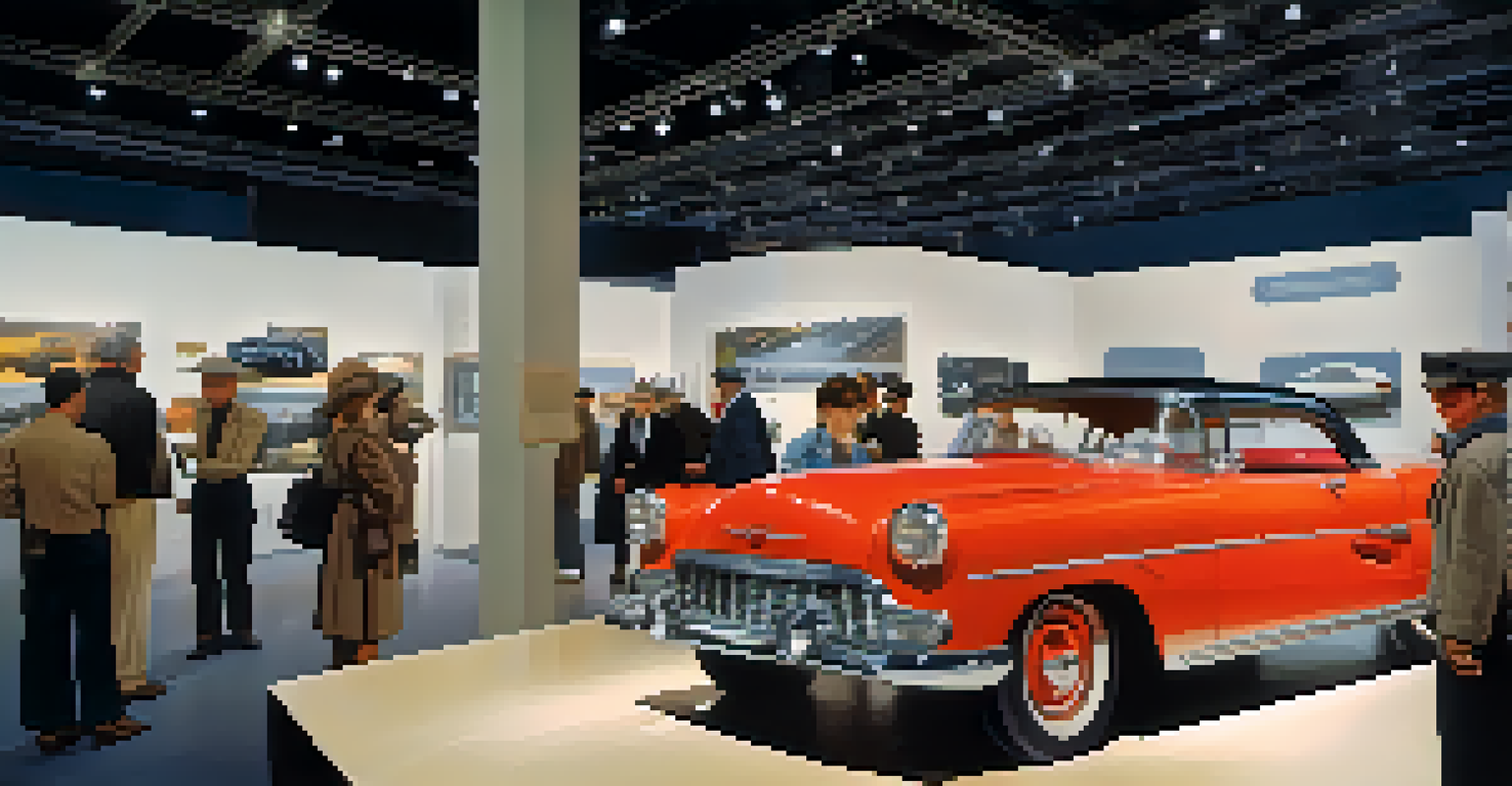The 1915 Panama-Pacific International Exposition in SF

A Historic Gathering: The Purpose of the Exposition
The 1915 Panama-Pacific International Exposition was a monumental event held in San Francisco, aimed at celebrating the completion of the Panama Canal. This massive project connected the Atlantic and Pacific Oceans, revolutionizing global trade and travel. The exposition also served as a platform to showcase San Francisco's recovery from the devastating 1906 earthquake, signaling the city’s resilience and progress.
The greatest achievements of the human mind are generally received with distrust.
Beyond its immediate purpose, the exposition aimed to promote international goodwill and foster economic ties between nations. Countries from around the globe participated, displaying their advancements in technology, culture, and the arts. This gathering of nations offered a unique opportunity for collaboration and exchange, reflecting the spirit of innovation that characterized the early 20th century.
In a sense, the exposition was not just a fair; it was a celebration of human achievement and a vision for the future. It highlighted the importance of unity and cooperation among nations, a theme that resonates even today. This gathering laid the groundwork for future international exhibitions, leaving a lasting legacy on how we share ideas and culture.
The Architectural Marvels of the Exposition
One of the most striking aspects of the 1915 exposition was its breathtaking architecture, which featured a blend of classical and modern styles. The centerpiece was the Palace of Fine Arts, a stunning structure that still captivates visitors today. Its Greco-Roman design, complete with a tranquil lagoon, created an idyllic setting for art exhibitions and cultural showcases.

The fairgrounds were adorned with grand buildings, many of which were adorned with intricate sculptures and murals. Each structure told a story, representing the participating countries and their unique contributions to the world. The architectural beauty not only attracted millions of visitors but also inspired future urban designs across the United States.
Celebration of Global Collaboration
The exposition served as a platform for international goodwill, showcasing cultural diversity and fostering economic ties among nations.
Moreover, the exposition’s layout was a carefully planned masterpiece, designed to lead visitors on a journey through different cultural exhibits. It was an immersive experience that invited guests to explore, learn, and appreciate the diverse heritage of the nations involved. This thoughtful design made the exposition not just a visual feast but an educational endeavor as well.
Innovations and Technological Advancements on Display
The 1915 Panama-Pacific International Exposition was a showcase of the latest technological innovations of the time. From the introduction of the telephone to early motion pictures, visitors were treated to a glimpse of the future. Companies and inventors seized the opportunity to demonstrate their products, many of which would go on to shape daily life in America and beyond.
Innovation distinguishes between a leader and a follower.
One of the standout innovations was the use of the first-ever radio transmission, which allowed attendees to experience live broadcasts. This cutting-edge technology not only entertained but also connected people in ways that were previously unimaginable. It was a clear indication of how far communication technology had come and its potential for the future.
The exposition also highlighted advancements in transportation, with exhibits featuring automobiles, airplanes, and even early versions of electric vehicles. These innovations represented a shift towards modernity, which was exciting for the public. As visitors marveled at these technologies, it became evident that the exposition was not only a celebration of the past but also a glimpse into the bright future ahead.
Cultural Exhibits: A Celebration of Diversity
Cultural exhibits at the Panama-Pacific International Exposition celebrated the diverse traditions and customs of participating nations. Each country showcased its unique art, music, and dance, allowing visitors to immerse themselves in a world of cultural richness. This exposure fostered a greater appreciation for global diversity, uniting people through shared experiences.
Performances ranged from traditional folk dances to modern artistic interpretations, creating a vibrant atmosphere that resonated throughout the fairgrounds. This cultural mix not only entertained but also educated attendees about the significance of each tradition. It was a reminder that, despite differences, there is much to learn from one another.
Architectural Wonders Inspired Future
The breathtaking architecture of the exposition, such as the Palace of Fine Arts, left a lasting impact on urban design and inspired future developments.
Moreover, the exposition served as a platform for marginalized groups to share their stories and heritage. Native American tribes, for instance, displayed their crafts and engaged visitors in discussions about their cultures. This inclusion was groundbreaking for its time and highlighted the importance of representing all voices in the tapestry of human experience.
The Lasting Impact of the Exposition on San Francisco
The Panama-Pacific International Exposition left a profound impact on San Francisco, both economically and culturally. The event attracted over 18 million visitors, providing a significant boost to the local economy and setting the stage for future tourism. As people flocked to the city, it solidified San Francisco's reputation as a vibrant cultural and economic hub.
Beyond the immediate economic benefits, the exposition catalyzed urban development in the Bay Area. New parks, transportation systems, and infrastructure projects were initiated, transforming the city. This development not only enhanced the quality of life for residents but also paved the way for San Francisco to become a major player on the world stage.
Culturally, the exposition instilled a sense of pride among San Franciscans, reinforcing their identity as innovators and trendsetters. The lasting structures and art inspired by the event continue to draw visitors today, ensuring that the legacy of the exposition lives on. It truly marked a turning point for the city, shaping its future for generations to come.
Notable Personalities and Figures at the Exposition
The 1915 exposition attracted a plethora of notable figures from various fields, adding a layer of prestige to the event. Among them was the famous architect Daniel Burnham, who played a significant role in shaping the fairgrounds. His vision for the layout and design of the exposition contributed to its lasting appeal and success.
Additionally, the event was graced by influential artists, politicians, and entrepreneurs who came to showcase their achievements and ideas. Their presence not only highlighted the importance of the exposition but also provided a platform for networking and collaboration. This gathering of minds fostered discussions that would influence future innovations and cultural exchanges.
Technological Innovations on Display
The exposition highlighted groundbreaking technologies, including the first radio transmission, showcasing the exciting advancements shaping the future.
Not to be overlooked, many local San Francisco residents and artists showcased their talents, contributing to the rich tapestry of the exposition. Their passion and creativity were evident in every corner of the fairgrounds, bringing the spirit of the city to life. These personalities helped create an atmosphere of excitement and engagement that defined the experience for all who attended.
Commemoration and Legacy of the Exposition
The legacy of the 1915 Panama-Pacific International Exposition is commemorated in various ways across San Francisco. The Palace of Fine Arts, one of the few structures that remain from the fair, stands as a testament to the creativity and vision of that era. Today, it serves as a beloved public space, attracting visitors who wish to connect with the past.
Furthermore, the exposition's impact is seen in the city’s continued dedication to hosting international events and festivals. San Francisco remains a cultural melting pot, celebrating diversity through art, food, and music. This spirit of inclusion and collaboration echoes the themes that were central to the exposition over a century ago.

In schools and museums, the history of the Panama-Pacific International Exposition is taught and preserved, ensuring that future generations understand its significance. The exposition not only marked a moment in time but also inspired ongoing conversations about innovation, culture, and the importance of unity in an ever-changing world.